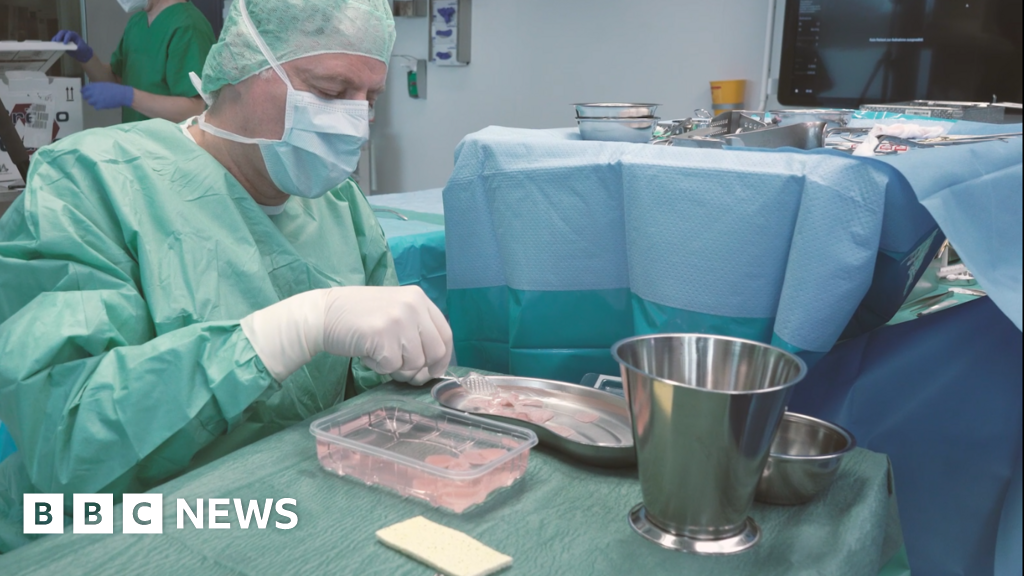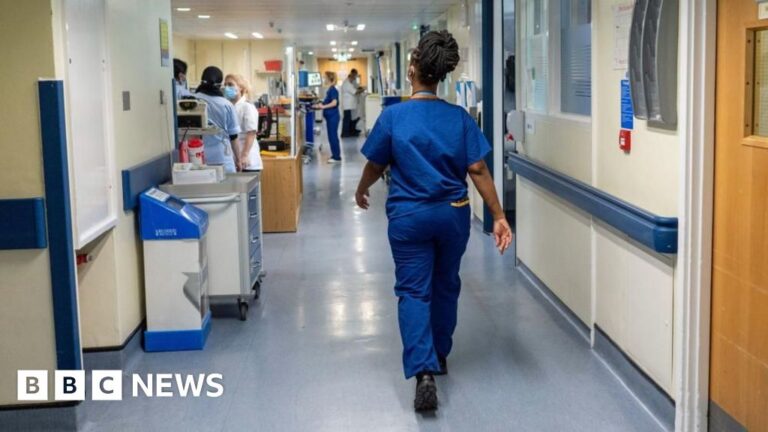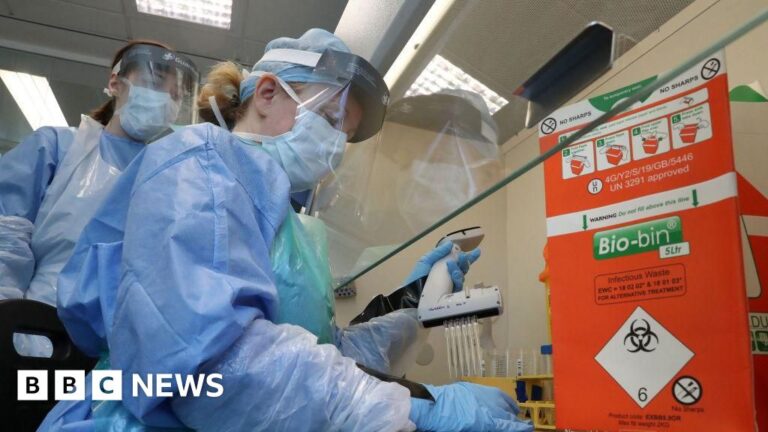Damaged hearts could be mended using small “patches” of heart muscle grown in the lab, say scientists writing in Nature. The technology could give new hope to millions of people with advanced heart failure whose treatment options are currently limited, the German researchers say.
The patches are grown from another person’s stem cells – special cells which can be turned into any number of different cell types – and made into heart muscle cells. The lab-grown cardiac tissue can then be grafted on to beating hearts to help them repair.
It is like “implanting young muscle”, says study author Ingo Kutschka, from University Medical Center Goettingen.
The long-term potential of the treatment is as yet unknown, with a clinical trial in 15 patients still ongoing. However, there have been encouraging results in trials of the patches on primates and on one human patient.
A 46-year-old woman had a heart attack in 2016, then developed heart failure which got steadily worse. In 2021, after all possible treatments had been tried, she chose to have a heart patch. The researchers say her condition was stable and she experienced no side effects from the implant, before having a heart transplant three months later.
The patch was able to “adapt, grow, mature and start to support the failing heart”, says lead author Prof Wolfram-Hubertus Zimmermann.
Heart failure is the leading cause of death worldwide, but there are few effective ways of fixing the organ once it is broken. It is a condition that makes even simple daily tasks, like climbing the stairs or getting dressed, exhausting. Heart devices can be costly and come with complications, and a heart transplant – although the best solution – is rarely an option. Most people with heart failure will not get a new heart, says Prof Zimmermann.
Source link




